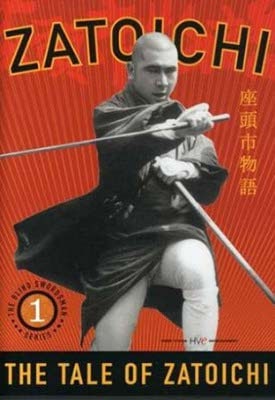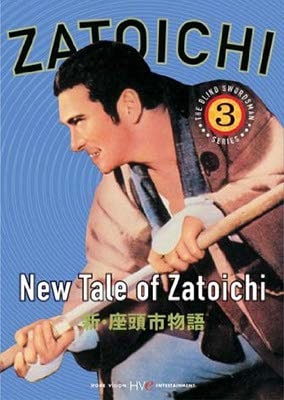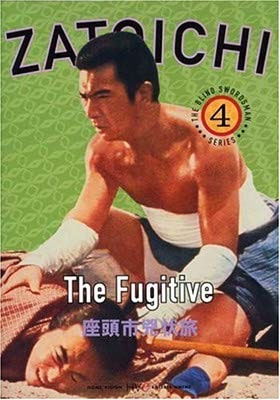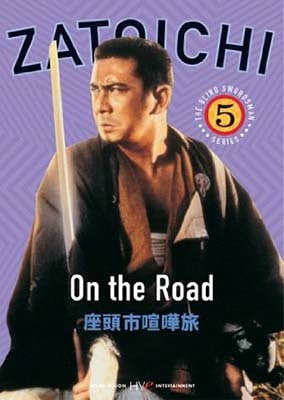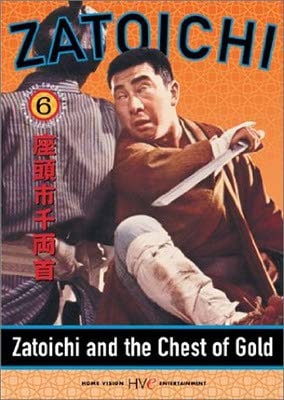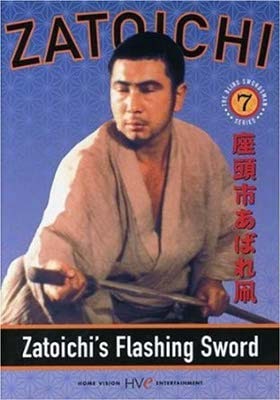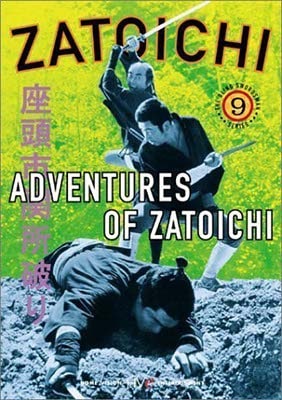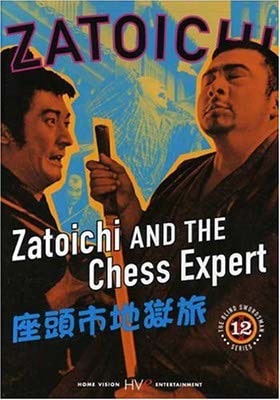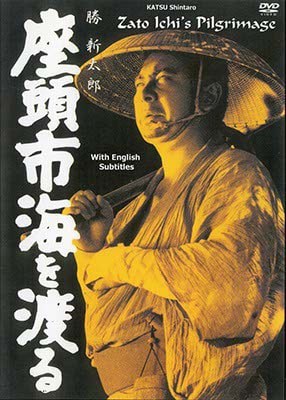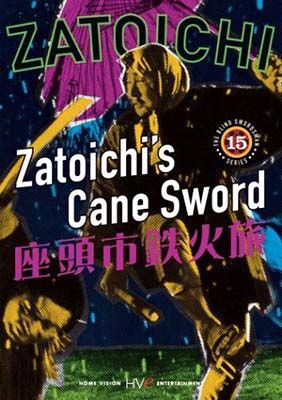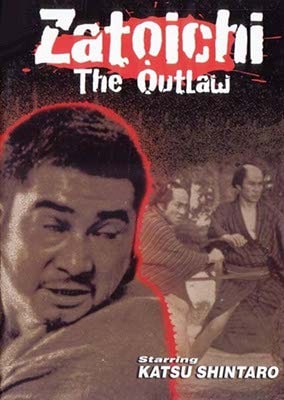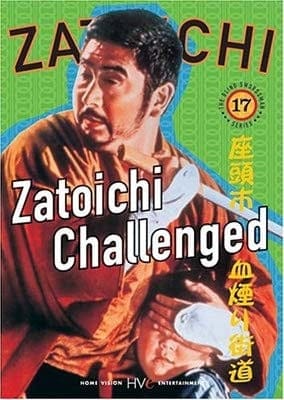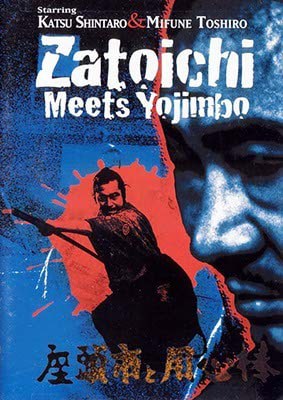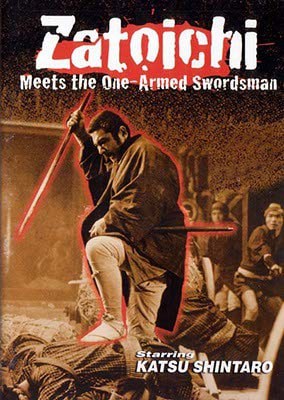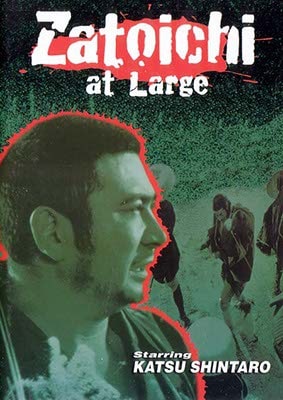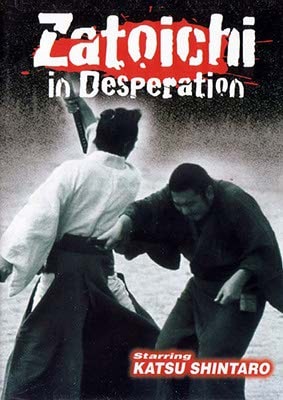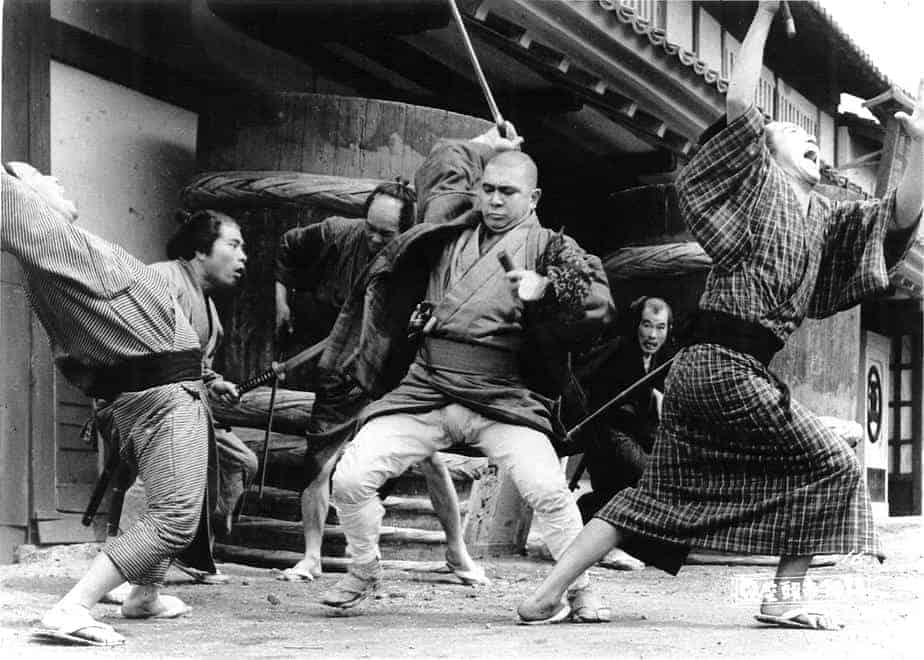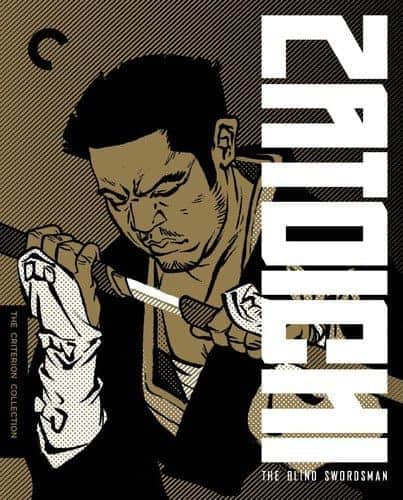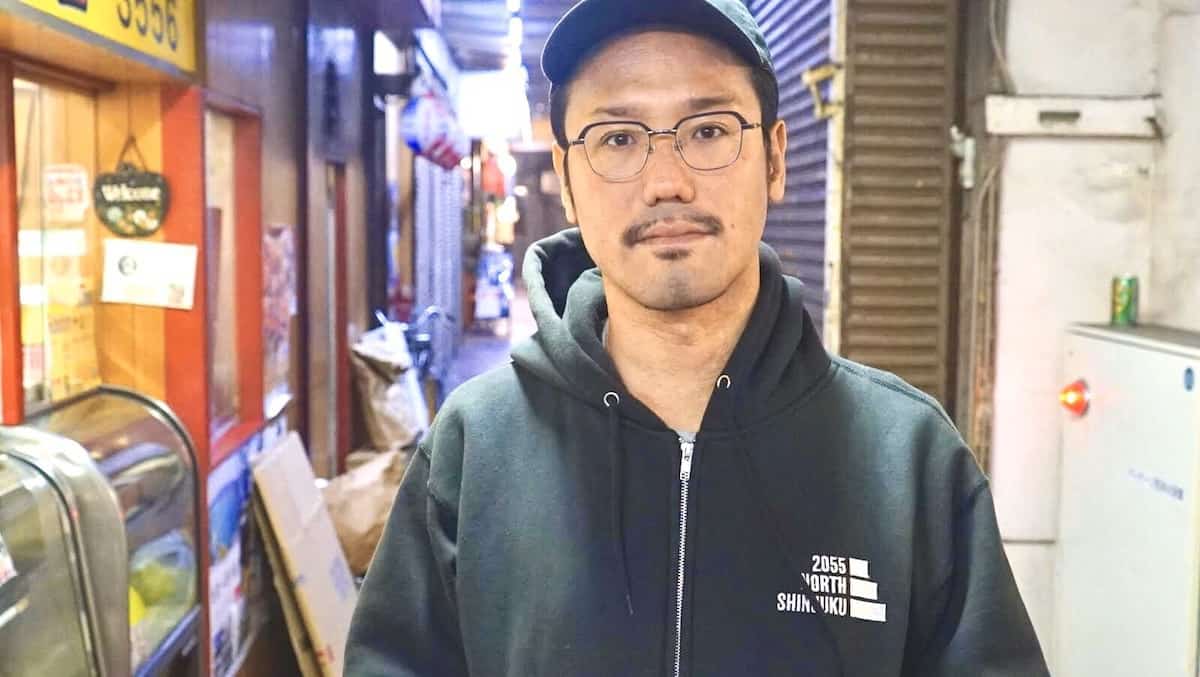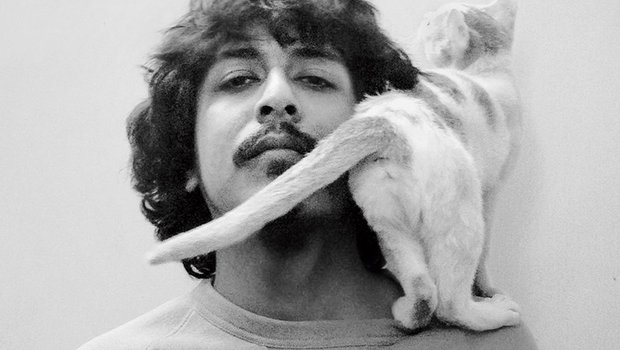The character Zatoichi became globally known to the public through Takeshi Kitano’s 2003 movie, “The Blind Swordsman: Zatoichi”. As we are about to see though, that was just the tip of the iceberg. Before Kitano’s movie there were 26 more and a TV series consisting of more than 100 episodes which lasted for four years.
Buy This Title
Let’s take things from the beginning though. Our hero’s first appearance was in a small story by Kan Shimozawa, titled “Zatoichi”, although the concept, as a whole, was based on a secondary character of this story, a blind gambler. He could guess what the dice would bring almost every time. According to the Library of Congress, the story was included in a book titled “Futokoro Techo”, which was first published in Japan by Chuo Koronsha in 1961.
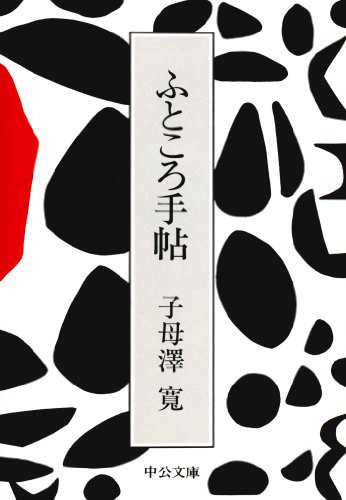
Kan Shimozawa (his real name was Umetani Matsutaro) was considered one of the most talented writers of his era. More than 100 of his works were converted into movies since 1931 (with “Monsaburo no Hide”), although he did not gain a reputation until the publication of his novel “Shinshengumi Chronicles” in 1937, which has been made into a movie twice.

The idea to write a Zatoichi movie came from Shintaro Katsu, who came to be the man behind the hero, since he was the leading actor in all of the 26 movies (and director in the last) and also in the TV series. The production company that took on the project was Daiei Studios. Katsu was one of the biggest stars in Japan during the 60’s and the 70’s. His production company, Katsu Productions was co-producing Zatoichi since 1967 (“Zatoichi the Outlaw”).
As for the Zatoichi story now, it was set during the Tokugawa era, which lasted from 1603 to 1868. That era was characterized by the centralization of power from the Tokugawa government, which put an end to factions, warlords and the disputes between them. Due to the lack of battles, the samurai class lost its influence, with many of them having to switch to “ronin” (samurai who do not serve a ruler), while others joined the Yakuza, in order to make ends meet. It is worth mentioning that, except for some samurai that were under government service, the rest of the samurai were forbidden to carry any weapon. It was the reason Zatoichi carries his sword disguised as a cane, a rather popular weapon at that time, named Shikomi. Almost all myths about wandering swordsman, like Zatoichi, derive from that period.
His actual name is Ichi, for the name Zato was a reference to the lower level of Todoza, the blind people union. Thus, his whole name is Ζato No Ichi, and for short, Zatoichi. During his wanderings, he practices the art of massage, a common occupation for blind people of that period, since, along with masseurs, they were considered to be on the lower classes of the society, same as beggars. We should also mention that at the time, blind people were considered to be mentally handicapped. Therefore, Zatoichi wanders around the country pretending to be an acupuncture practitioner, masseur, singer and shamisen player. We often watch him winning large amounts of money from playing dice, due to his ability to understand whether the sum is odd or even, by the sound they make.
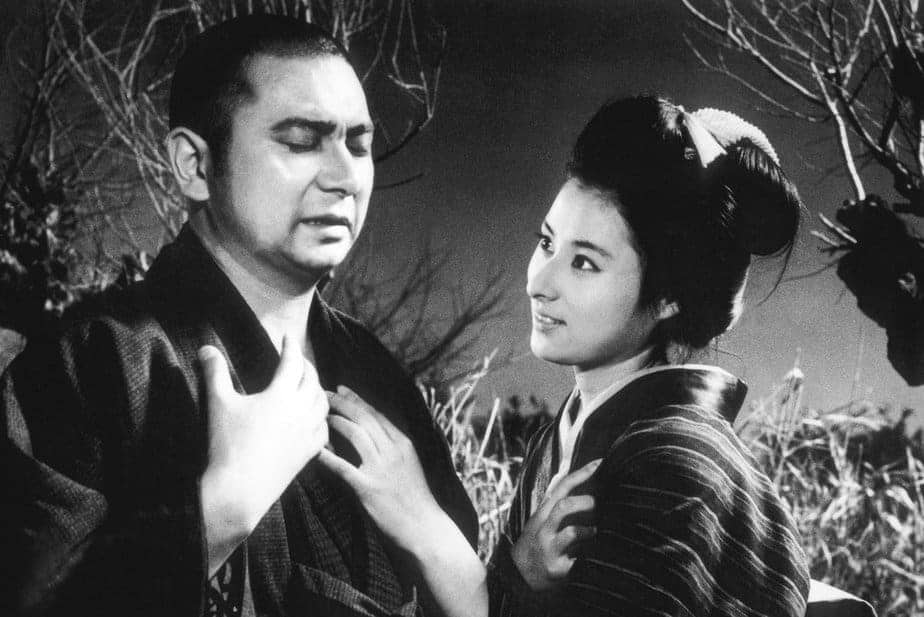
Zatoichi also uses sumo and samurai fencing techniques. Yet the one that he truly excels at is iaido, a fencing technique that consists of drawing quickly and accurately the sword, striking, and repositioning it in the scabbard. The way he holds and pulls his sword is unique and it is called “reverse draw”, since it cuts from inside out and not the opposite way, as usual. In the first three films, which were meant to be a trilogy, Zatoichi appears as a self-taught, as someone who was maniacally trained to confront the ones that were making fun of him. But since we refer to a large concept and because the script is not cohesive, in other films and TV episodes he is mentioning another master, one who makes fun of him rather than teaching him. At some point actually, Zatoichi kills this master but he does so in a non-shaming way, since the teacher-student relationship was considered to be sacred even if the master was of that kind.
Let us now unravel the facts about the production of Zatoichi. From film number 1 until 22 and the declaring of its bankruptcy, the production company was Daiei. Katsu’s company was co-producing from film number 16 until the last one. This fact may have pushed Daiei a little more towards the end, since Katsu’s company was receiving a big part of the earnings.
The 70’s, in general, would prove to be one of the most difficult eras for the large studios, as people gradually stopped attending cinemas in favor of TV. Daiei was hit the hardest and in 1971, filed for bankruptcy. Eventually, it was reorganized but would never reacquire its distribution wing. This decline in cinema attendance was the reason Katsu felt that he had to do something to keep the franchise afloat. Thus the crossovers and the presence of many movie stars in the films in this particular decade. The creation of the TV series can also find its raison d’etre in the growing popularity of the TV.
After the sinking of Daiei, the franchise was taken on by Toho, until film number 25. Toho would also land, as a deal with Katsu Productions, the distribution rights to the three previous Zatoichi films that he had produced with Daiei: “Zatoichi the Outlaw”, “Zatoichi Meets Yojimbo” and “Zatoichi at the Fire Festival”. Despite Daiei’s reformation, Toho has managed to retain the ownership to these three films and continues to do so to this day.The last film was produced by Shochiku, who also produced Kitano’s film.

The TV series screened at the same time with the movies, from 1974 to 1979, and was, for the most part, originally scripted (the script did not continue or accompany the movies, since it was consisted of separate stories). Katsu was the main lead here also and his company, the main producer. To summarize, it is fairly obvious that Katsu embodied the whole franchise.
A year after the release of the last Zatoichi movie, “Blind Fury” was presented to the American audience, with Rutger Hauer as the main lead. This film was loosely based on “Zatoichi Challenged”, the seventeenth film of the series.
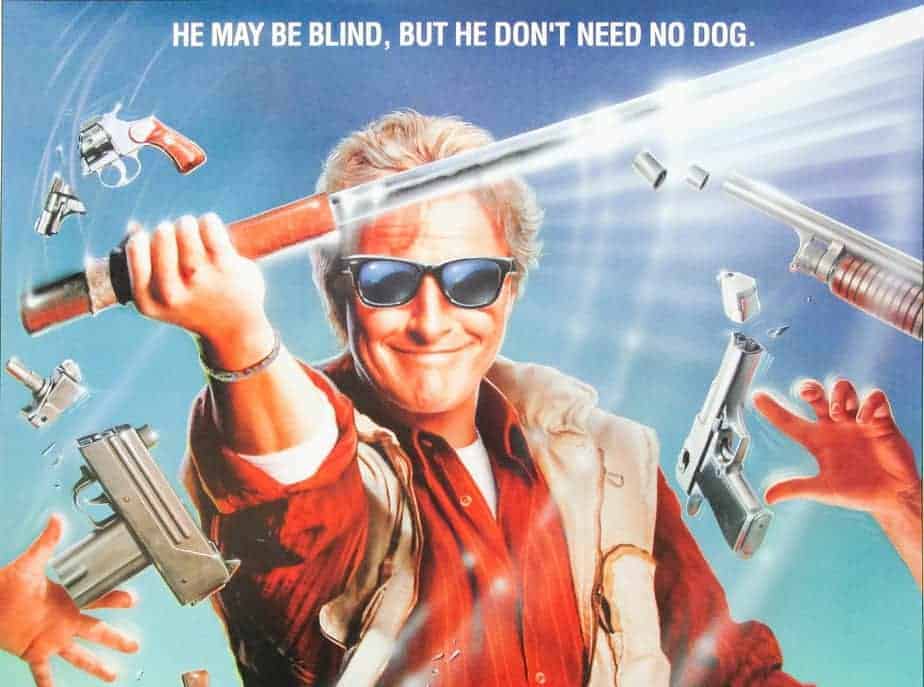
Not long after Katsu’s death, Kitano was approached by a very powerful madame and ex-dancer, Saito. She was a close friend of Katsu’s, and owned the rights to everything Zatoichi. Extremely wealthy, the owner of dozens of strip clubs, and sometimes mothering loan-shark to Katsu, she wanted Kitano not only to do the remake, but to star in it. Though weakly attempting to bow out of the proposal, as he was not a fan of the franchise, Kitano accepted. The Great Lady could not be refused… nor could her contribution of 15% to the budget be ignored. After visiting Katsu’s grave to pay respects, the production began. As Kitano put it, he accepted to play Zatoichi after all, and he said, “I immediately dyed my hair blond.” Looking back at Katsu’s body of work, Kitano was determined to make something “new” out of Zatoichi, to make “a totally different character”.
The pre-production began two years after Katsu’s death, and Kitano threw himself into the Zatoichi remake project, directing and acting with such zeal that the old madame was proud enough both for herself and Katsu. Taking the story and script from none other than the late Kan Shimozawa (which included never-before-used material), Kitano slowly ground out his masterpiece performance. The film was awarded the Venice Film Festival’s Silver Lion for Best Direction in 2003, among a plethora of other awards.
Buy This Title

In 2007, Takashi Miike directed a 166-minute stage play, named “Zatoichi Live“, with Sho Aikawa and Sadao Abe as the main leads . The play was reshown in 2017, with a script by Lily Franky and Shinobu Terajima and Ebizo Ichikawa in the lead roles.

In 2008, another film based on Zatoichi was shown in Japan, titled “Ichi: The Movie” by Fumihiko Sori, about a blind woman who is traveling Japan in search of her mentor, who was the actual Zatoichi. The distribution was done by Warner Bros, in another fact that emphasizes the impact of the franchise.
Buy This Title

Zatoichi has influenced a vast number of works, including Frank Slade, Al Pacino’s role in “Scent of a Woman”, the comic hero Daredevil and a lot of characters in anime, manga, video games and movies.
Sources:
http://www.imdb.com/name/nm0793753/bio?ref_=nm_ov_bio_sm
http://www.britannica.com/event/Tokugawa-period
http://www.britannica.com/topic/ronin
http://www.wa-pedia.com/glossary/samurai.shtml
http://www.hackwriters.com/zatoichi.htm
http://www.tohokingdom.com/articles/2004-04-05_fall_of_daiei_studios.html
http://www.imdb.com/title/tt1060256/companycredits?ref_=tt_dt_co
